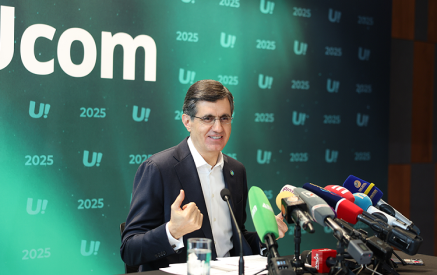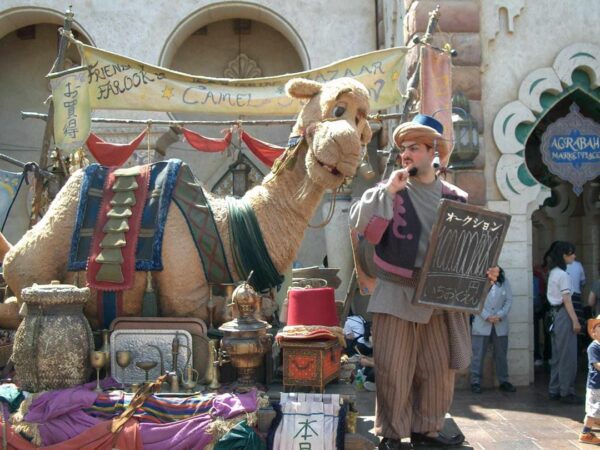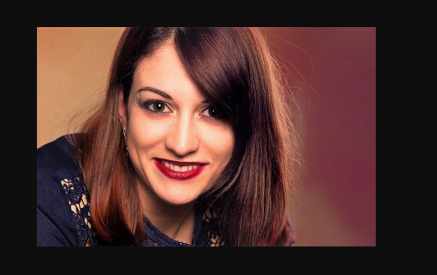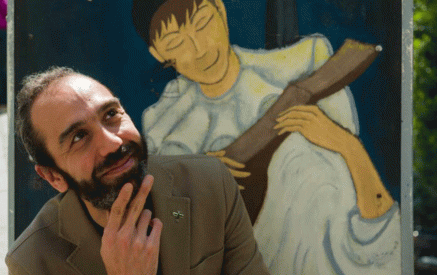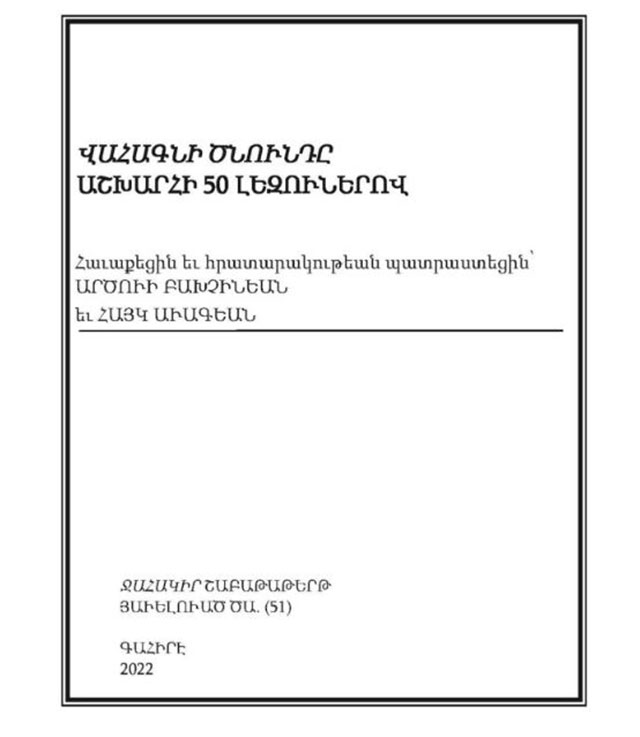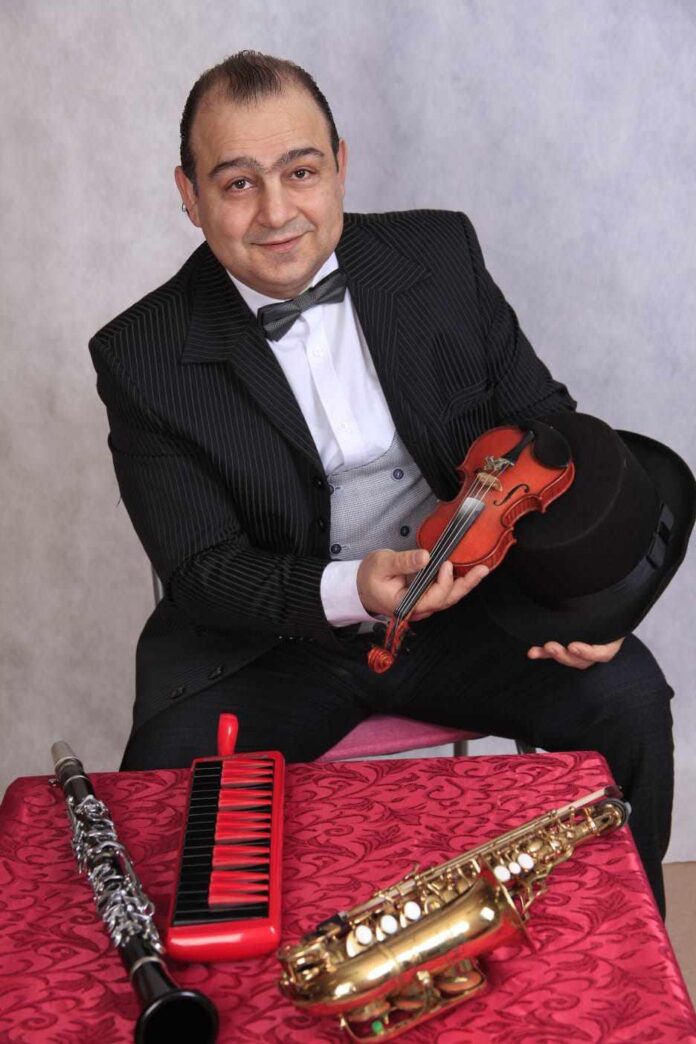YEREVAN / MOSCOW OBLAST — Artak Harutyunyan (born 1972, Hoktember village, Armenia) is a multi-hyphenated circus artist: clown, tightrope walker, juggler, magician and musical eccentric.
As a teenager, he participated in all community groups in the town of Metsamor (theatre, youth technicians, chess, acrobatics, football, boxing), and at the same time studied violin at a music school. He studied at the Leonid Yengibaryan Studio of the State Circus of Armenia (artistic director: Sos Petrosyan) and the Moscow State College for Circus and Variety Arts.He has been a professional on stage since 1989, participated in many circus and variety festivals, became a laureate of international competitions. In 2001-2007 he worked in Japan; in2012-2014 and 2022-2023 hewas invited to work in the legendary circus of Yuri Nikulin.
Since 2008, Artak has been the director of the Wonderful People production center. From 2010 to 2015 he was the artistic director of the World of Fantasy cultural center in Yegorevsk, near Moscow, and since 2015 – the artistic director of the circus studio Arena of Miracles in the cultural centers of Korobovo and Serednik, in Moscow Oblast. He directed “Color of Fairy Tale Heroes,” “The New Adventures of Father Frost and Snow White,” “The Wolf and the Seven Owls,” “Funny Boys” and other performances. Through his efforts, the Sandachok folk ensemble and the Wild Clover vocal and instrumental ensemble were created. He also performed regularly in the Yerevan circus.
–Artak, your biography and current activities are so rich and diverse that it is impossible to cover everything within the limits of one interview. Let’s start with general questions about the circus. You have worked in different countries. What is the attitude towards the circus in various countries?
Read also
-Circus is a unique art whose history begins before our era. I do not know whose phrase “Bread and circus” is, but that factor is still alive all over the world. Over the centuries, the circus has undergone changes in its genres, but the interest in it among the peoples has not decreased. As for which country has a stationary circus building and whose audience likes to visit the circus, I would say the first is Russia, then Kazakhstan, where there are four stationary circus buildings. There are a few of them in Europe, America and other countries.
-If you can surprise everywhere with amazing tricks, then making the audience laugh is the most difficult thing. Have you felt that the sense of humor is different among different peoples?
-I will say the following: it depends on a person’s sense of humor, and children’s attention and logic towards absurd stagecraft. In my practice, there has never been a case where the audience did not laugh, although I do not like mimes. The main thing for me is to be natural, eccentric.
-Many people, including me, are against training animals in the circus. What is your opinion?
-The sad thing is that the “circus without animals” phenomenon is managed and well financed by a group of producers and political operatives. To be honest, today’s circus has become just a business. If during the Soviet regime it was art, now it is business. Almost all producers are interested in having a low-cost circus program. And wild and exotic animals are a very expensive pleasure in the circus, the costs are enormous. Here is the truth. Meanwhile, they do not present the situation correctly to the people, they write that animals are being beaten and killed in a circus, so that they can train them. To be honest, unfortunately, people are crueler to each other.
-What memorable event will you tell from your career?
I perform in the circus as a musical eccentric, almost 80 percent of my circus acts are related to musical instruments. I have professional knowledge of 12 instruments. As a child, I attended a music school, learned to play the violin and piano, mastered the saxophone at the Moscow circus school, over the years I also learned to play the clarinet, harmonica, bells, duduk, zurna, shvi (Armenian fipple flute), zhaleika (Slavic wind instrument), trobophone (sewer pipe instrument), xylophone. There have been many interesting and fairy-tale moments to tell, it will take a long time, I will rather write them down in my memoirs when I retire (laughs).
One of the funniest incidents happened in Japan, in the fairy tale park “Tokyo Disney Sea.” In Japanese, I played the role of a merchant who offers his goods to the audience at astronomical prices, loaded on a camel. It is clear that no audience would do business with me, because it was about millions of dollars. The entire performance should not be more or less than 20 minutes, that is the order, and the Japanese love punctuality. At approximately the 7-10th minute of the show, I put my camel up for auction and bid 100,000 dollars. And suddenly a spectator rose his hand and wanted to buy the camel. I said that I only take cash dollars. He agreed. I did not believe that he will really give cash and I asked to show me his dollars. A second later, his two bodyguards opened the bag and showed the bundles of dollars. Here I made an unexpected improvisation, saying that the camel is not for sale, he is my relative, my friend. All this took only 13-15 minutes, and I finished the number ahead of time. After the speech, our Japanese bosses warned me this incident should be the first and the last, and they also admitted that they had set it up on purpose to see if I would take the money or not.
-In your opinion, what is the future of the circus?
In my opinion, it is in traditional circus, in which there are only magicians, clowns, acrobats and other artists who perform without technological and other decorative luxuries, whose faces are bright and without masks. As about today’s circus, if I present it through the eyes of a modern director, then Chinese circus actors show the most complicated tricks and work unified, but without clowns. I cannot help but remember the Canadian “Cirque du Soleil,” which revolutionized the entire circus format, and many people want to be like it. In my opinion, the demand for new circus pays a lot of attention to effect technologies, 5D, 8D and other synthetic components, and the saddest thing is that some circus genres are losing their existence. One of them, perhaps the most important one, is the clown, who connects the circus program from one act to another. To tell you the truth, I do not like the word “clown” because politicians express everything negative with that innocent name, while the clown instills only good with his friendly performances (I am not talking about animators and fake clowns, whose faces you cannot look at, they put so much makeup that at night people do not sleep because of fear). I mean professional actors: yes, nowadays there are good circus comedians, but no one talks about them. If in Soviet times, they often made films about clowns as publicity for good and kind, now the clown has become a shadow.
-Artak, I learned about you for the first time when I was collecting data about Armenians in Japan. Is the circus academy you founded in Japan still operating?
I created my first pedagogical skills in Japan, in the city of Shin-Urayasu, Chiba Prefecture, at the “Mare” cultural center. By the way, there have been educators in my family tree since my paternal grandmother, and I wanted to transfer my knowledge to Japanese children through the circus. Before opening the academy, I invited people of different positions and their families to a free show I organized, which included musical eccentricities and clown performances. After the concert, out of 70 people in the hall, 25 parents with their children remained. The director of the circus, Hiroshi-san, offered me to teach all genres of the circus: magic, acrobatics, balancing, original genres and musical eccentricities. Working with children taught me a lot. Japanese children are more resistant and persistent; they will not rest until they do what is required of them. If something failed, they cried. Seeing their concern, I changed the assignment so that they would feel good and not lose their enthusiasm. After Japan, I also taught for 12 years in the World of Fantasy and Arena of Miracles circus studios near Moscow, and I can say that Russian children do not have this endurance and discipline. There are talented people, but they are lazy. However, I found an individual approach for them as well. In Japan, the circus academy existed for two years and three months, during which time the children learned different circus genres and most importantly, to be confident and believe in their abilities. After my contract ended, I could not find a sponsor and a replacement, so unfortunately, I dissolved the circus academy and returned to Armenia, from where my activity in the Yerevan circus began again.
Armenia’s circus traditions are rich, but the traditional circus building does not operate. Ten years ago it was reported that the government invested 107.9 million drams ($264,680) in the building of the Yerevan circus, then they blew up the dome in order to build a new, more comfortable and modern building on the spot. Today we have a restored circus building, but rare circus performances take place in the tent. There are some rumors that the stationary circus will be opened this summer.
That will be a miracle! And our circus can become an Armenian brand. We dream of the time when the world will buy Armenian products, that “made in Armenia” will apply to various fields and, why not, to the circus as well. All over the world, we have many talented Armenian actors of different genres of circus, but there was no one who could organize an Armenian circus collective. Many states are now investing a lot of money in circus programs, it is one of the state’s treasures. Did you know that in Soviet times, the most profitable arts in terms of bringing currency were ballet and circus? That is a fact! Our Armenian circus collective was considered one of the best, where legendary artists Stepan Isahakyan, Leonid Yengibaryan, Nazee Shirai, Vagharshak Arzumanyan, clowns Harutyunyan and Minerevyan, jugglers Hakobyan couple worked, among other respectable personalities. I cannot help but mention my talented colleagues Vilen Melikjanyan, Anton Pilosyan, Eduard Hakobyan, Martiros Keshchyan, who have also upheld the honor of the Armenian circus artist. Bright and good memory to those who are not in this world, and may God give health and strength to those who are alive.
-Do you follow the circus life of Armenia?
-Of course, I follow the development of our Armenian circus; I am very happy to see Naira Petrosyan’s students on different stages. The Vardanyan brothers offered me to work in their program, which they presented last autumn in the traveling circus you remember: unfortunately, I have contracts until the end of next January, so I could not come to Armenia.
From the bottom of my heart, I wish our Armenian people peace, wisdom, and the most important thing, that common sense should be the priority for them, not emotional outbursts. “We are few, but they call us Armenians,” and all of us should be able to see the love between the Lord and ourselves. That’s all, I hope the time will come, and the good will come later. Thank you, dear Artsvi, for the good questions and your interest! Health and all the best to everyone!
By Artsvi Bakhchinyan










